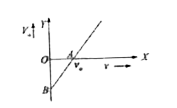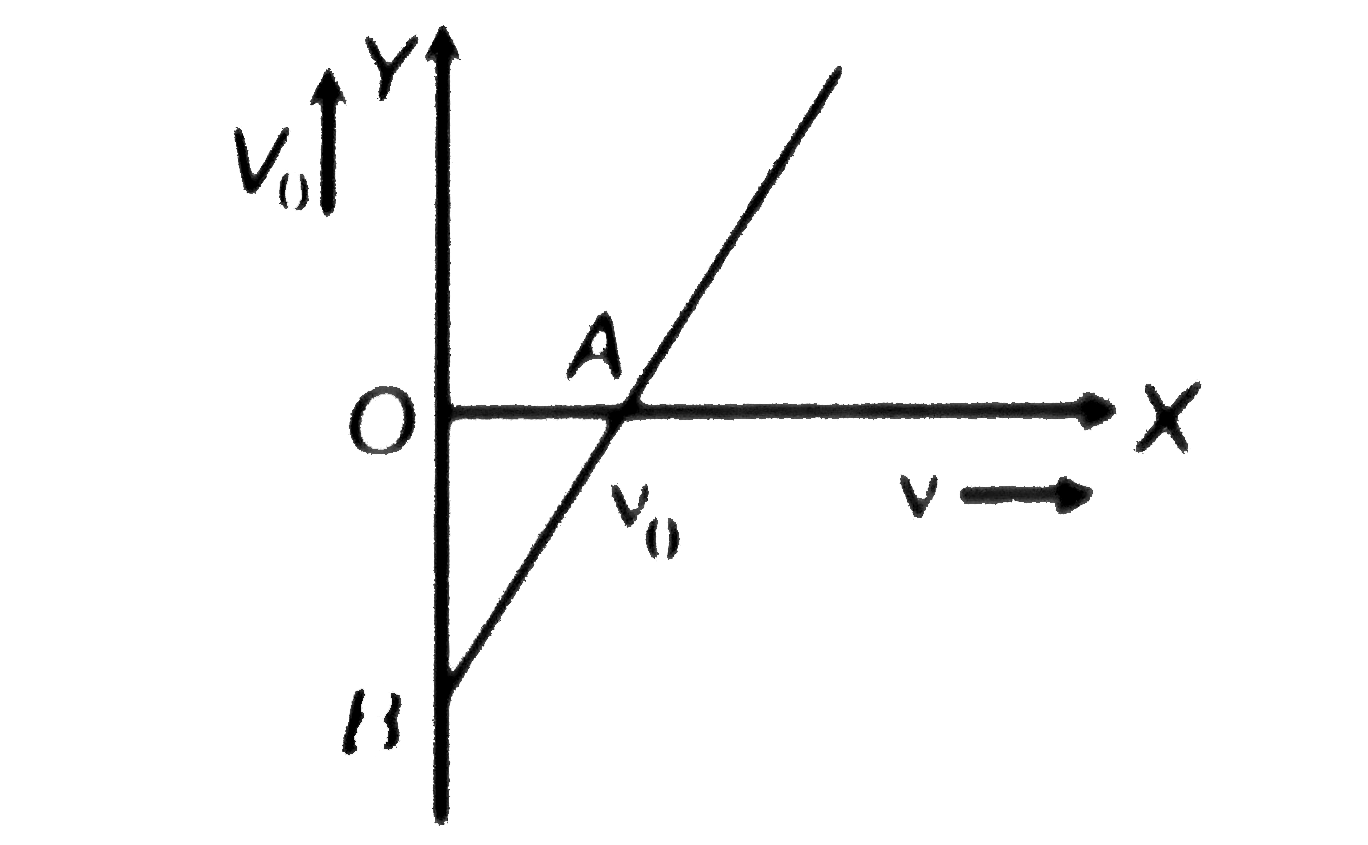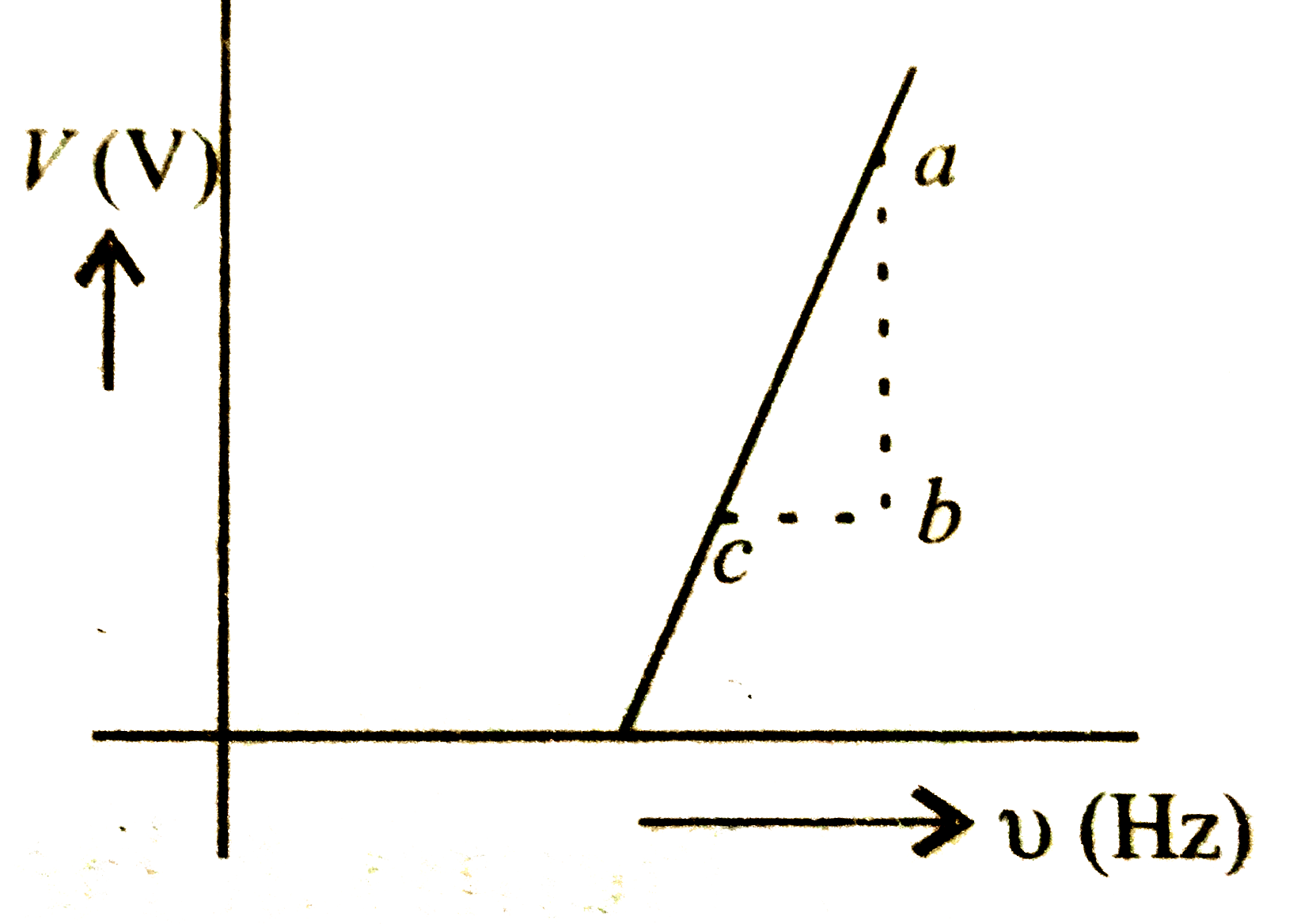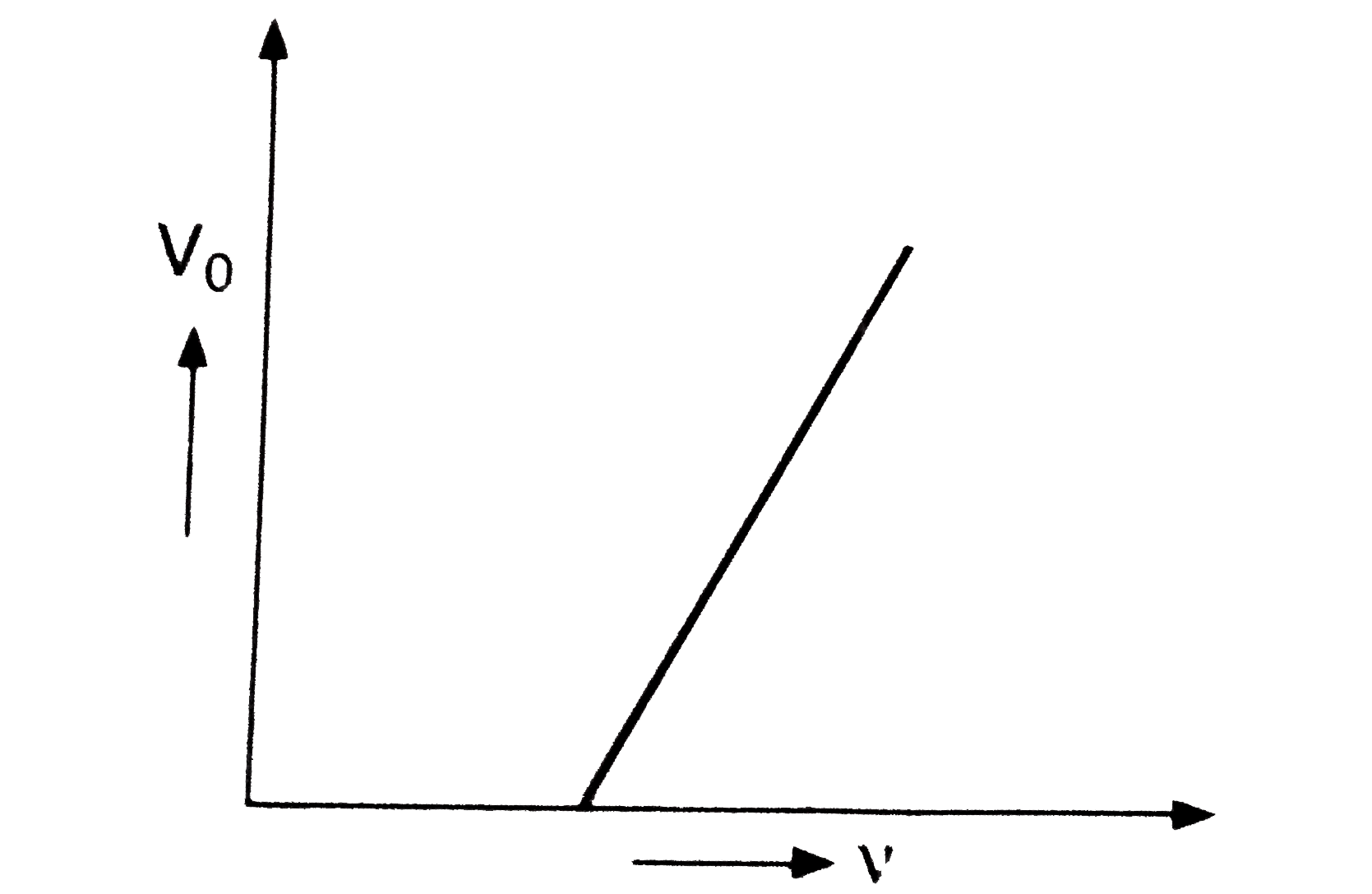In an experiment on photoelectric effect the frequency fof the incident light is plotted against the slopping potential V0. The work function of the photoelectric surface is given by (e is electronic charge)

OB×e in eV
OB in volt
OA in eV
The slop of the line AB
The correct Answer is:A
Using Einstein.s equation, V0=(he)v−W0e
Comparing this equation with y=mx+c
We get intercept on V0 axis =W0e
⇒OB=W0e⇒W0=OB×e
Similar Questions
In an experiment on photoelectric effect the frequency f of the incident light is plotted against the stopping potential V0. The work function of the photoelectric surface is given by ( e is the electronic charge)
 View Solution
View SolutionIf the frequency of light in a photoelectric experiment is doubled the stopping potential will
View Solution
Knowledge Check
- Question 1 - Select One
In an experiment on photoelectric effect the frequency f of the incident light is plotted against the stopping potential V0. The work function of the photoelectric surface si given by ( e is the electronic charge)
 AOB×e in eVBOB in voltCQA in eVDThe slope of the line AB
AOB×e in eVBOB in voltCQA in eVDThe slope of the line AB - Question 2 - Select One
In an experiment on photoelectric effect the frequency f of the incident light is plotted against the stopping potential V0. The work function of the metal is given by ( e is the electronic charge)
 AOB×e in eVBOB in VoltCOA in VoltDThe slope of the line AB
AOB×e in eVBOB in VoltCOA in VoltDThe slope of the line AB - Question 3 - Select One
In photoelectric effect, which of the following property of incident light will not affect the stopping potential
AFrequencyBWavelengthCEnergyDIntensity
In photoelectric effect the slope of straight line graph between stopping potential (Vs) and frequency of incident light (v) gives
 View Solution
View SolutionIf the frequency of light in a photoelectric experiment is doubled the stopping potential will
View SolutionIn a photoelectric experiment, the graph of frequency v of incident light (in Hz) and stopping potential V (in V) is as shown in the figure. Planck's constant is (e is the elementary charge)
 View Solution
View SolutionIn a photoelectric experiment, the graph of frequency v of incident light (in Hz) and stopping potential V (in V) is as shown in the figure. Planck's constant is (e is the elementary charge)
 View Solution
View SolutionIn photoelectric effect the slope of straight line graph between stopping potential (V0) and freqency of incident light (v) gives:
 View Solution
View Solution

